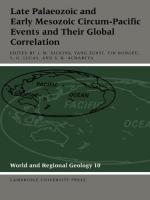|
This section contains 294 words (approx. 1 page at 300 words per page) |
Earth's mass is divided into an inner core, outer core, mantle, and crust. The crust is outermost layer of the earth, 3–44 miles (5–70 km) thick and representing less than 1% of the earth's total volume. Thin compared Earth's diameter, the outermost crustal layer is further subdivided into two basic types of crust—each unique in composition, origin and fate. Although the earth is dynamic, with new crust constantly being created and destroyed, the fact that size of the earth remains constant argues that there is no net creation or destruction of force and that these two processes are in equilibrium.
Although there are thousands of minerals, about 40 minerals represent more than 99% of the mass of Earth's crust. In terms of percentage of Earth's crust by weight, oxygen and silicon account for nearly 75% of Earth's crust. Oxygen is the most abundant element (approximately 46.5% followed by silicon, approximately 28%). In order of percentage by weight, other important elements include aluminum, iron, calcium, sodium, potassium, and magnesium. All other elements (e.g., gold, silver, copper, etc.) compose the remaining one to two percent of the crust.
Crust is classified as oceanic crust or continental crust. Oceanic crust is thin (3–4.3 mi [5–7 km]), basaltic (<50% SiO2) and dense. Compositional chemical studies also establish that oceanic crust is substantially younger than the continental crust. No rock specimen dated to more than 250 million years old have ever been identified in oceanic crust.
Continental crust is thick (18.6–40 mi [30–65 km]), granitic (>60% SiO2), light, and old (250–3,700 million years old).
The outer crust is further subdivided into lithospheric plates, that contain varying sections of oceanic and continental crust.
At the deepest crustal border there exists a compositional change from crust material to mantle pyriditite called the Mohorovicic discontinuity, and the lithospheric plates carrying both oceanic and continental crust move on top of mantle's asthenosphere.
See Also
Dating Methods; Earth, Interior Structure; Geologic Time; Hawaiian Island Formation; Isostasy; Lithospheric Plates; Mid-Ocean Ridges and Rifts; Mohorovicic Discontinuity (Moho); Ocean Trenches; Plate Tectonics; Rifting and Rift Valleys; Soil and Soil Horizons; Subduction Zone
|
This section contains 294 words (approx. 1 page at 300 words per page) |


